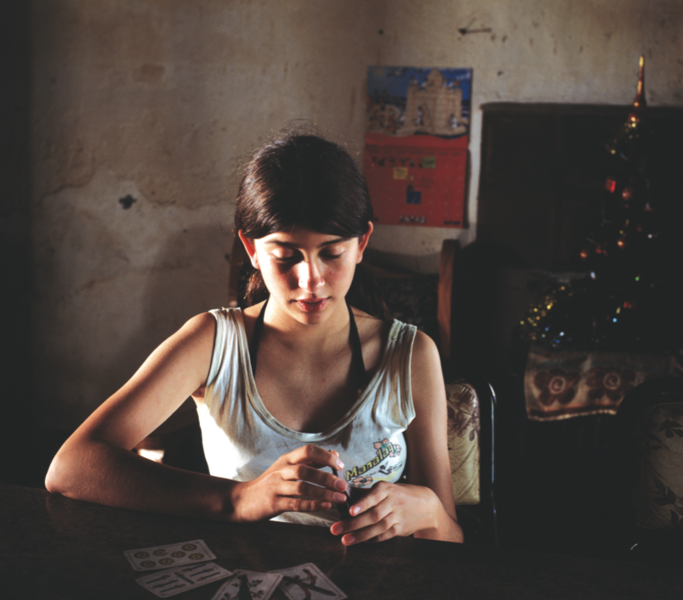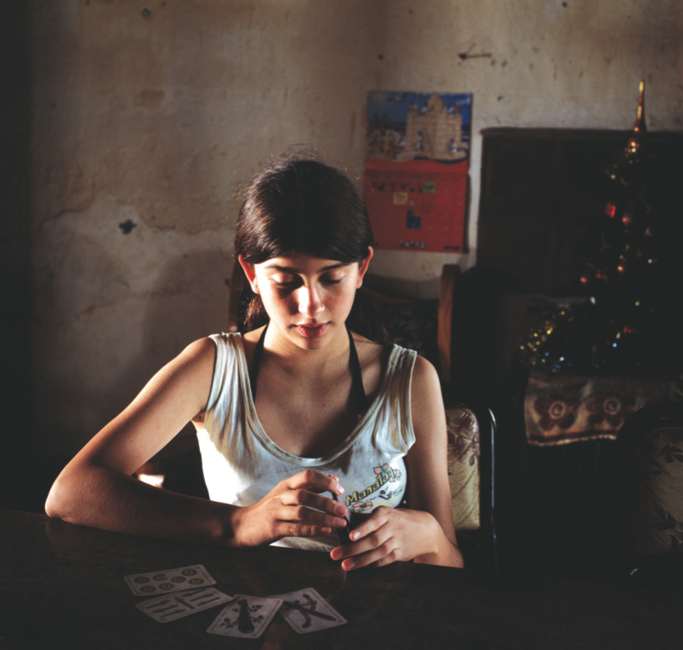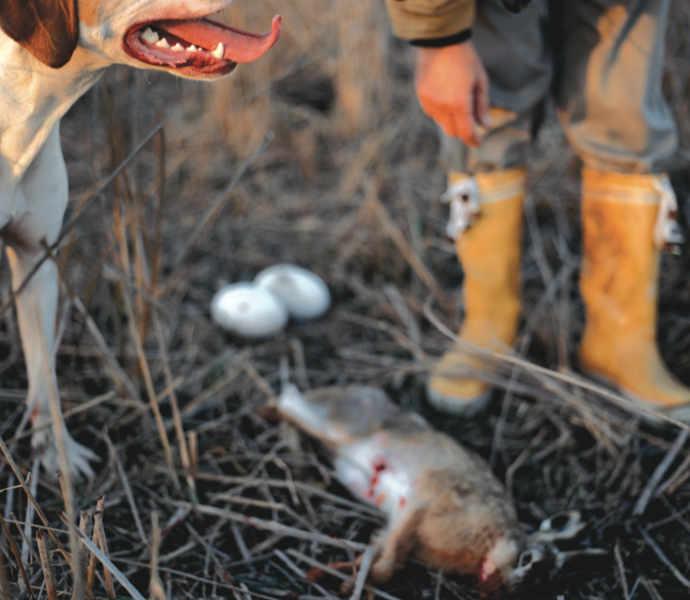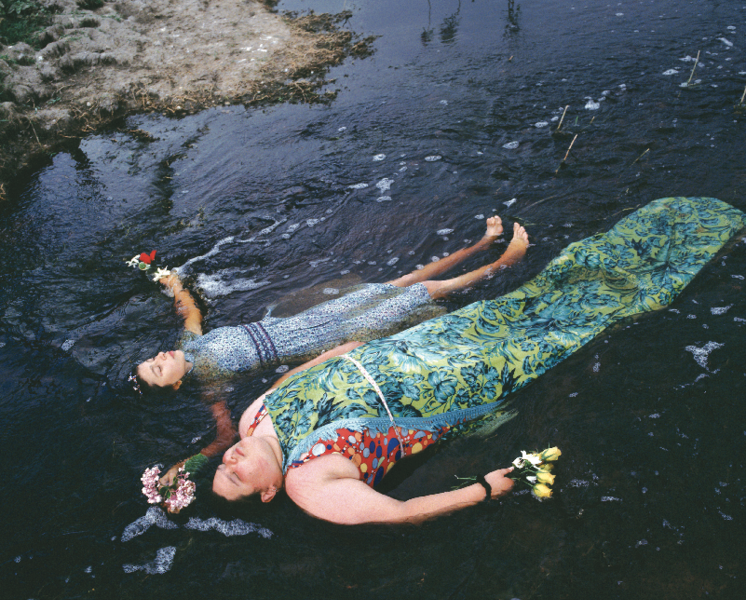Alessandra Sanguinetti
A Shared Intimacy ...“ A photograph is a secret about a secret. The more it tells you the less you know”... Diane Arbus.1
One of the characteristics which have defined photography as a medium has been its voyeuristic capacity...the act of observing, entering into, and poking one ́s nose in the lives of others as if they were one ́s own... The appropriation of the act of breaking up the space of intimacy that exists between private and public. Alessandra Sanguinetti ́s work has been associated to this gesture of observing the lives of others in order to understand and recreate one ́s own life. For a decade, Sanguinetti has fundamentally developed two projects in a parallel way: En el sexto día (On the Sixth Day), in which she weaves the complex relationship between farmers and farm animals; and Las aventuras de Guille y Belinda y el enigmático significado de sus sueños (The adventures of Guille and Belinda and the enigmatic meaning of their dreams), in which she records the fantasy-tinged everyday life of two country girls, from their pre-teen years to the present. Both series associate stories drawn from the artist ́s own childhood and her coexistence, in the countryside, with the lives of the others, those who live their day to day lives in La Pampa; those who are born, grow up, and die there, and this includes both humans and animals.

Reflection on the intimate connection between certain milestones such as childhood and adulthood, life and death, are present in Sanguinetti ́s work, engaged in a permanent dialectic exchange. So is the feeling of never knowing if we are in the face of found or simulated images.2 Sanguinetti combines in her work the duality of the one who finds and the one who creates, and she records the passage of time in the lives of the beings she portrays, exercising in this way the purest form of the act of photographing. Just as is the case with Tarot cards, in which death represents not only the act of dying, but also the notion of change and regeneration, the work of Alessandra Sanguinetti has delved deep into this space of flow and mutation between opposites, creating an intimacy shared by both.
Interview with Alessandra Sanguinetti.
AC: How do you envisage photography as a medium?
AS: I take photographs for the same reasons other people work with photography; it is a way of telling a story based on something real, and it stops time. I am interested in building something based on something else which already exists; in living it, recreating it, and narrating it in my own way. I want to visually translate my ideas of what life is. I am very much interested in the idea of questioning photography as a medium; questioning the veracity and the ambiguity that images are endowed with. I am puzzled by the “faithfulness” or unquestionability attributed to the written word as opposed to the constant questioning of the image, by the rigor with which photography is treated in the media, while the weight of words is not questioned in equal measure. A single word can completely alter the meaning of a text, or a piece of news.
AC: Can you explain the origin of the very long-term projects you have developed in the last few years, the series The adventures of Guille and Belinda and the enigmatic meaning of their dreams and On the Sixth Day?
AS: Both series are temporally interconnected; they are series that have been, and continue to be created in a parallel way. I have always visited the countryside; I used to spend all my summers in La Pampa, in Argentina, some 300 kilometers from Buenos Aires. When I returned to Buenos Aires from New York, at the end of 1990, I considered going back to the countryside to take photographs and started to work on The Sixth Day as part of a long-term project. The countryside connects me emotionally with my childhood; it is there that all the important stories from my past live; there I learned everything, including how to understand life and death. All the good and the bad things in life are present in the country. It is very crude; the pampas hide nothing. I am interested in reflecting this nakedness in my work; the relationships that are established with animals, among humans, the constant presence of the life/death duality. It was there, in the countryside, that I met Guille and Belinda and began to film them on video –they were then around nine and eleven years old; today they are seventeen and nineteen. I brought them costumes, I made them play and dance, and they found it was great fun. In the countryside there is not much of anything. And we began to share a kind of game; when they were willing, I directed them and they performed. Bye and bye I began to take pictures of them, and then photography played a more important role in the process, since it is the language with which I feel more at ease and the one I have greater mastery upon. Beginning to work with them on video was what made it possible for me to photograph them. And so I have taken photos of them for about nine years. Now they are grownups; one of them is already a mother. We are not friends, but there is a piece of shared intimacy...they know that whenever I am there, if they so wish, I will photograph them.
AC: Do you consider both series a sort of visual narrative? Is each image a “decisive moment” for you?3
AS: The photographs in both series exist independently from one another, but all of them together build up a narrative; it is a recorded process; the interdependence of the series makes up the whole... The reflection about time, and the narrative that is created based on an image, and the previous one, and the next.
AC: Can you elaborate a little on the relationship between your work and childhood and adolescence?
AS: I have always questioned the meaning of adolescence, considering it a disillusionment inherent in life itself. Children are potential adults; our adult world is predetermined or is a consequence of the childhood we have lived. We are absolute reflections of everything we have seen, etc. I feel that small prophecies of what a person ́s life will be appear during childhood. Childhood determines the context and the personality framework within which a person will develop for the rest of his or her life. Therefore, what is our capacity to control fate? How much can one change, taking into account what one has already lived?
AC: In both series, in On the Sixth Day as well as in The adventures of Guille and Belinda..., one feels the presence of Christian/Catholic imagery. Can you comment on this?
AS: Since I was a little girl, I have always been impressed by the Christian religion, the violence through which it manifests itself. Its images of suffering, blood and death fascinated and confused me, being beautiful and repulsive at the same time. From Caravaggio to Carrie (the movie), they were the material of my nightmares and my imagination. Some of these aesthetics surely filtered into my work. But in more conscious terms, the title of The Sixth Day is an allusion to the biblical day in which God granted man supremacy over all creatures on Earth. Whether or not one is a religious person, this passage describes the attitude towards nature that has prevailed in the Western world. On the other hand, Guille and Belinda found it amusing to recreate the religious images in the posters and paintings around them, and I was interested in seeing the way in which they adapted them to their context and appropriated them.
AC: Magnum Photos has recently selected you as nominee member. What are your expectations regarding this nomination?
AS: I have always respected many photographers who are Magnum members; the Agency has been a reference point in my work and my training as a photographer. My intention is to do something different from what I have usually done, to generate new projects, to come out of myself a little.
1 “Diane Arbus” – by Doon Arbus. An Aperture Monograph (1972)
2 Jean Baudrillard points out in Simulations, Semiotext(e),1983, “The very definition of the real has become: that of which it is possible to give an equivalent reproduction. . .”. The notion of simulacrum as truth refers to the work of Sanguinetti insomuch as it simultaneously records in a documentary way and recreates territories and fables, what Baudrillard would then call the hyperreal. N. from the author.
3 Henri Cartier-Bresson published in 1952 the book Images à la Sauvette, translated into English as The Decisive Moment. In the introductory essay, Cartier-Bresson quotes Cardinal Reitz ́s phrase “There is nothing in the world that does not have a decisive moment!” For Cartier-Bresson, this decisive moment is the instant when the photographer finds and captures, in fractions of seconds, a certain composition: It is the intuitive moment represented by the triggering of the shutter circuit, as a reflection on the importance of the photographic “instant”, unique and unrepeatable. N. from the author.
*Amalia Caputo is an artist and independent art critic based in Miami.







